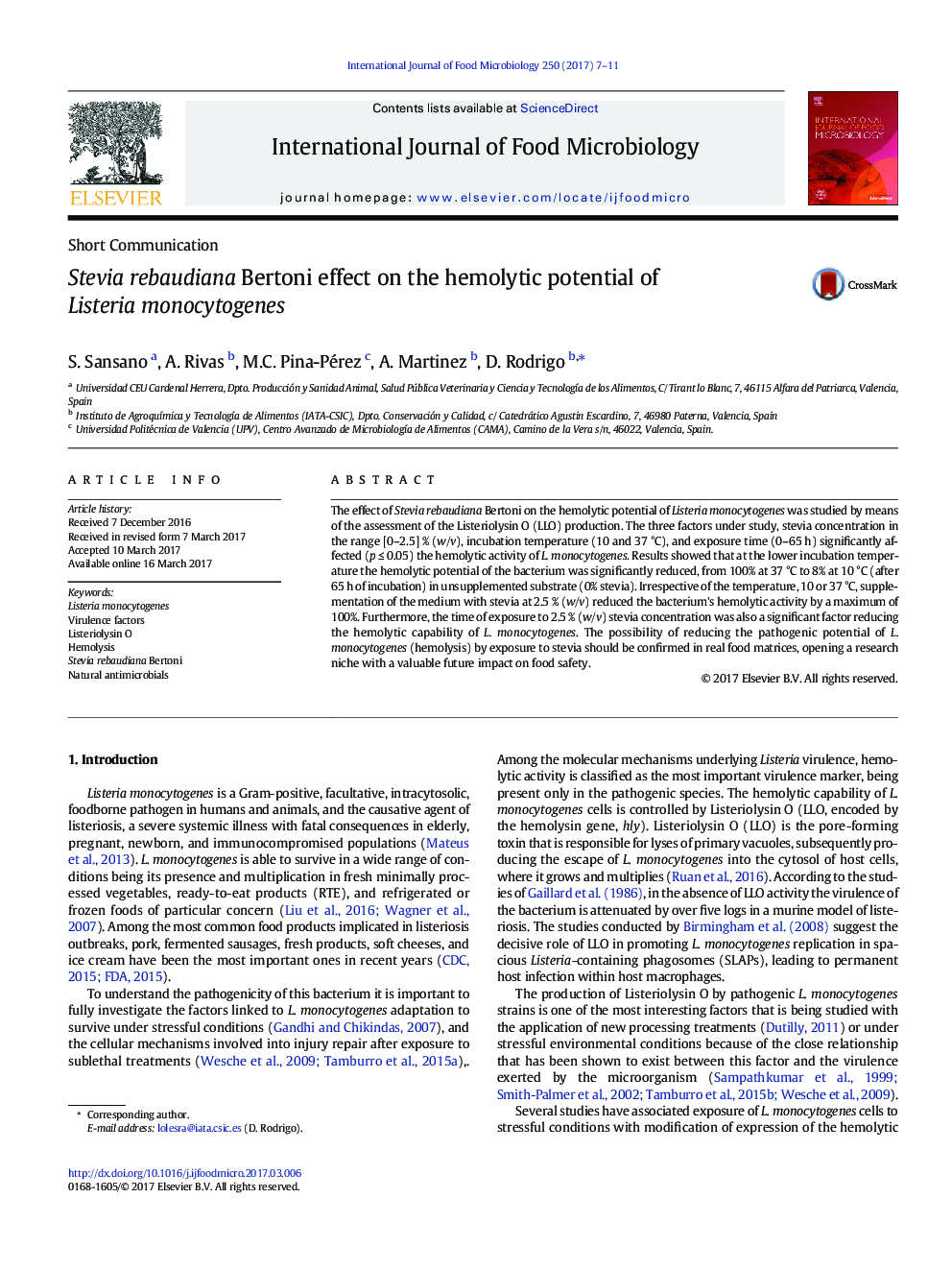| Article ID | Journal | Published Year | Pages | File Type |
|---|---|---|---|---|
| 5740750 | International Journal of Food Microbiology | 2017 | 5 Pages |
â¢Listeria monocytogenes hemolytic potential is reduced by Stevia rebaudiana Bertoni.â¢LLO production is dependent on stevia concentration, temperature and time of exposure.â¢LLO production is nulled by the substrate supplementation with 2.5% (w/v) stevia.â¢The exposure time to stevia significantly reduces the bacterium hemolytic potential.â¢Low temperature of incubation (10 °C) reduced the hemolytic activity of the bacteria.
The effect of Stevia rebaudiana Bertoni on the hemolytic potential of Listeria monocytogenes was studied by means of the assessment of the Listeriolysin O (LLO) production. The three factors under study, stevia concentration in the range [0-2.5] % (w/v), incubation temperature (10 and 37 °C), and exposure time (0-65 h) significantly affected (p â¤Â 0.05) the hemolytic activity of L. monocytogenes. Results showed that at the lower incubation temperature the hemolytic potential of the bacterium was significantly reduced, from 100% at 37 °C to 8% at 10 °C (after 65 h of incubation) in unsupplemented substrate (0% stevia). Irrespective of the temperature, 10 or 37 °C, supplementation of the medium with stevia at 2.5 % (w/v) reduced the bacterium's hemolytic activity by a maximum of 100%. Furthermore, the time of exposure to 2.5 % (w/v) stevia concentration was also a significant factor reducing the hemolytic capability of L. monocytogenes. The possibility of reducing the pathogenic potential of L. monocytogenes (hemolysis) by exposure to stevia should be confirmed in real food matrices, opening a research niche with a valuable future impact on food safety.
